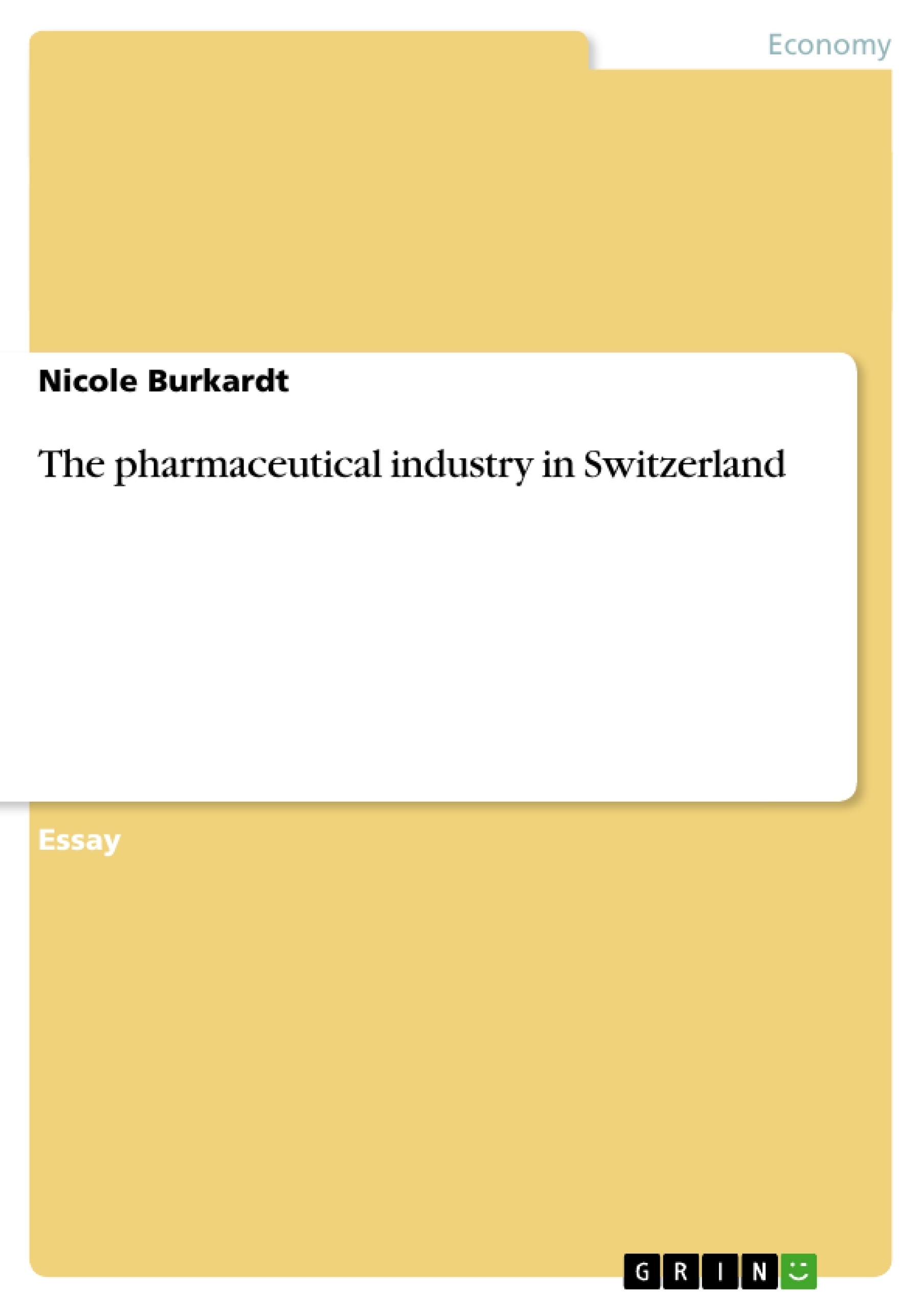International trade can to some extent be explained by the theory of absolute and comparative advantage. By nature, countries have distinctive immobile production factors and hence different relative production costs for the same good/service (Lawler and Seddighi, 2001). The theory of the absolute advantage by Adam Smith is that a country should specialise on the product/service where it has an absolute advantage over any other country in order to increase productivity and output.
Ricardo’s theory of the comparative advantage says a country should export products where it has the greatest comparative advantage or where the comparative disadvantage is smallest and should import goods in which its comparative disadvantage is greatest (Trebilcock and Howse, 2005). This model still represents the basis for international trade theory, but it was further modified and reformulated which will be discussed later on.
The pharmaceutical industry in Switzerland by looking at innovation, R&D expenditure, export figures and the growth level will be analysed. All this is interrelated to theoretical background of newer trade theories of Vernon, Krugman and Cantwell.
Table of Contents
- 1. Introduction
- 2. The pharmaceutical industry in Switzerland
- 3. Conclusion
- 4. List of References
- 5. Appendices
Objectives and Key Themes
This text explores the pharmaceutical industry in Switzerland, analyzing its innovation, research and development (R&D) expenditure, export figures, and growth level. It aims to provide a comprehensive overview of the industry's strengths and its contribution to the Swiss economy, particularly in light of modern trade theories like those of Vernon, Krugman, and Cantwell.
- The role of innovation and R&D in the pharmaceutical industry
- The comparative advantage of Switzerland in the global pharmaceutical market
- The impact of trade theories on understanding the pharmaceutical industry
- The relationship between education, innovation, and economic development
- The importance of export figures and growth levels in the pharmaceutical industry
Chapter Summaries
- Chapter 1: Introduction: This chapter provides an overview of international trade theory, including the concepts of absolute and comparative advantage. It highlights how these theories, particularly the theory of comparative advantage, lay the foundation for understanding international trade patterns, including those in the pharmaceutical industry. The chapter also introduces the focus of the text, which is to analyze the pharmaceutical industry in Switzerland by examining its innovation, R&D expenditure, export figures, and growth level.
- Chapter 2: The pharmaceutical industry in Switzerland: This chapter delves into the key characteristics of the Swiss pharmaceutical industry, emphasizing its technology and science-driven nature. The chapter highlights the industry's exceptional R&D to sales ratio and its historical contribution to innovation in the global pharmaceutical market. It also explores the factors that contribute to Switzerland's competitive advantage in this sector, including its strong education system, skilled workforce, research-intensive companies, and robust domestic demand.
Keywords
The main keywords and focus topics of this text include the pharmaceutical industry, Switzerland, innovation, R&D expenditure, export figures, growth level, comparative advantage, trade theories, education, and economic development.
- Quote paper
- Nicole Burkardt (Author), 2007, The pharmaceutical industry in Switzerland, Munich, GRIN Verlag, https://www.grin.com/document/80195




